*This post may have affiliate links, which means I may receive commissions if you choose to purchase through links I provide (at no extra cost to you). As an Amazon Associate, I earn from qualifying purchases. Please read my disclaimer for additional details.
Modern design is often closely tied to minimalism. People increasingly want smooth surfaces.
In kitchens, tile backsplashes and clean design are high in demand. Builders are tasked with finding creative ways to hide outlets, switches, and other necessities, while maintaining or improving functionality.
Hiding electrical outlets isn’t easy, but there are several solutions homeowners and builders can use to decrease interruptions in tile or paint, leaving kitchens with fewer lines and more bare surfaces.
Most of these can happen when you build your house or renovate an older kitchen. Some of them will require a professional electrician, and others are simple tips you can use to better conceal your outlets.
Here are nine effective ways to hide electrical outlets in a kitchen.

Table of Contents
Use Pop-Up Outlets
If you’ve stayed in a hotel or been in a conference room lately, you’ve likely seen a variety of pop-up outlet styles. These outlets lay flat on surfaces like tables, islands, or countertops. They can stay closed and open with the flip of a switch or pressing of a button.
As the name suggests, they appear when triggered and reveal one or more outlets. Modern pop-up outlets also typically include USB ports for charging phones and other peripherals.
Use Paintable Outlet Covers
If you can’t make the outlets disappear, you can do your best to camouflage them. Buy some affordable paintable outlet plates, and paint them the same color as your walls to make them blend in.
You can find thin cover plates to minimize the seam between the cover and the wall surface. What’s nice about this option is that you can change your plate covers along with the walls whenever you remodel your kitchen.
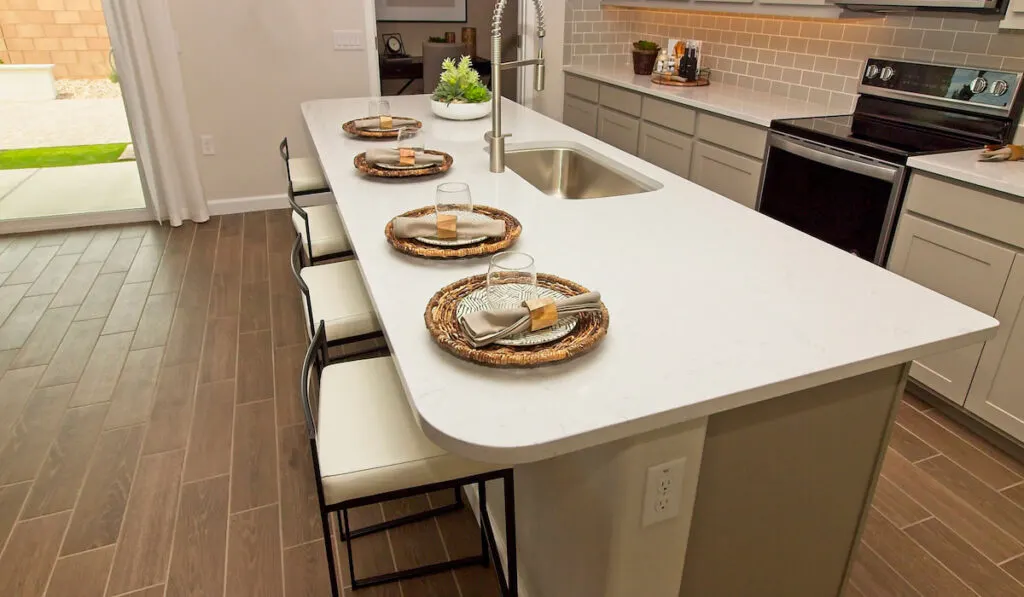
Make Use of Your Island
One of the best ways to hide electrical outlets is to use your island. Installing many outlets around your island is easy, because then all the electrical wiring is in the same general location.
You can install one or more outlets on each side under the lip of your countertops, making them less noticeable.
If you don’t have an island, then put your outlets on the sides of your counters to hide them. Once there, all you have to do is position your appliances near the edges of your counters or stow them away and plug them in every time you use them.
These days, plenty of people like to keep their countertops as clear as possible to maintain a clean look. Side or hidden outlets make things look even more minimalist and don’t affect performance at all.
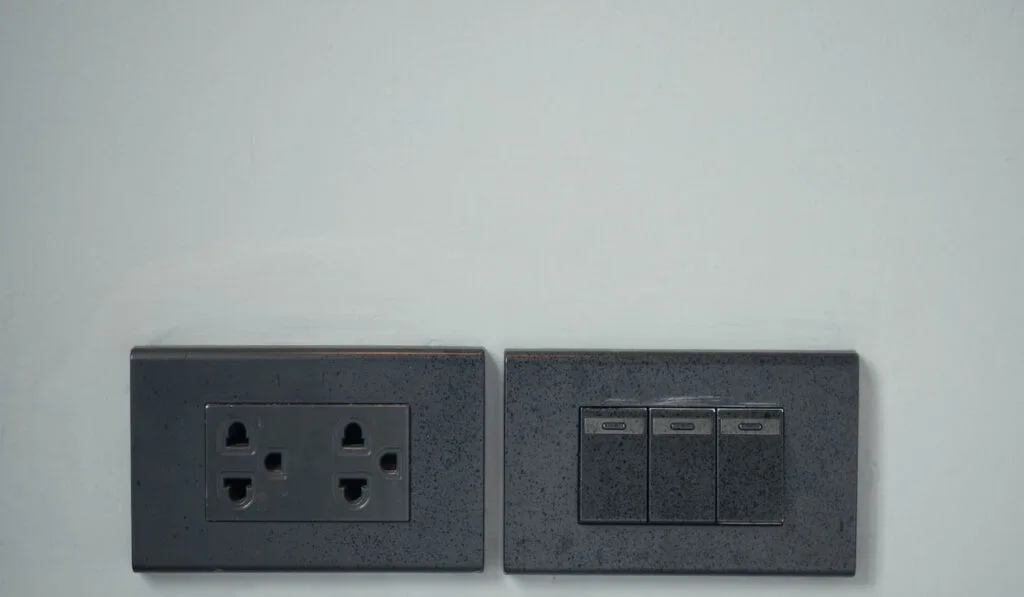
Buy Colored Receptacles
Up until recently, outlet receptacle options were severely limited. Your choices were essentially white and off-white. If you looked hard, you might have been able to find something black or dark grey.
Now, however, there’s a large spectrum of color options to help outlets blend in better.
Even if you aren’t able to find a perfect match, you’ll likely find something that makes the outlets more subtle than bright white.
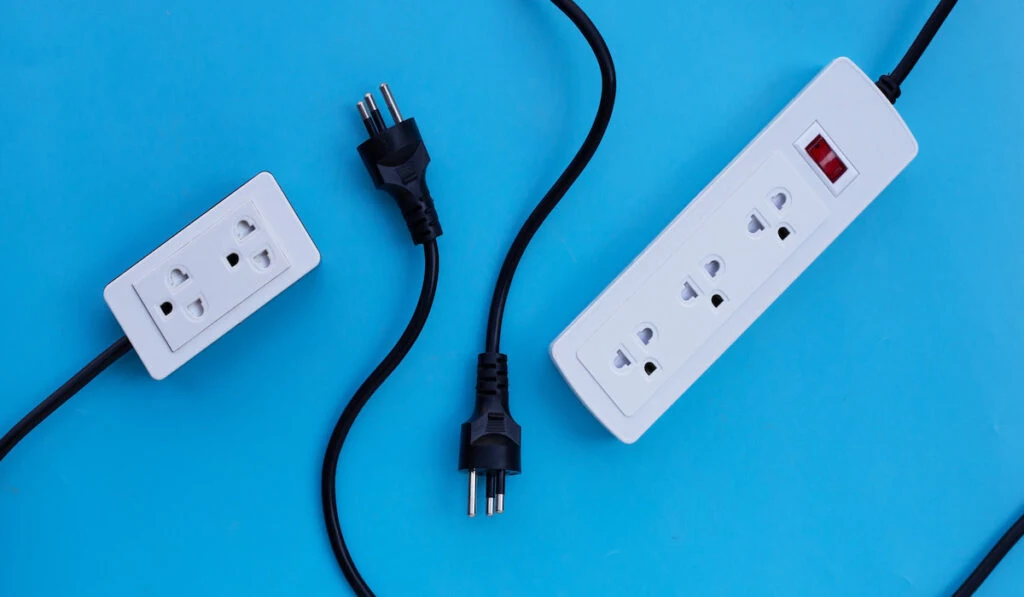
Use Subtle Power Strips
Unless you’re very handy around the house, you’ll probably need to hire a contractor to help here. Installing power strips under your cabinets along your counter is a fantastic way to both increase how many outlets you have and keep them out of sight.
One great thing about installing power strips is that they’re usually completely out of sight.
You may not be as concerned with matching paint color and other issues because you normally can’t see them unless you bend your neck to look up at the bottom of your cabinets.
Use Custom Removable Cover Plates
Depending on your kitchen build or remodel, you may be able to get away with using custom tile plate covers that completely hide outlets.
For example, you and your contractor can cut out sections of the tile wall that match the shapes of the outlets around your kitchen.
Using Velcro or some other fastener, you can put in or take out the section based on when you need to access an outlet. If you’re not using the outlet, it’s virtually impossible to see where it is.
Measurements need to be exact for the tile cover plate to fit in the space nicely. Otherwise, you’ll end up with an unsightly tile design that looks like it was done shoddily.
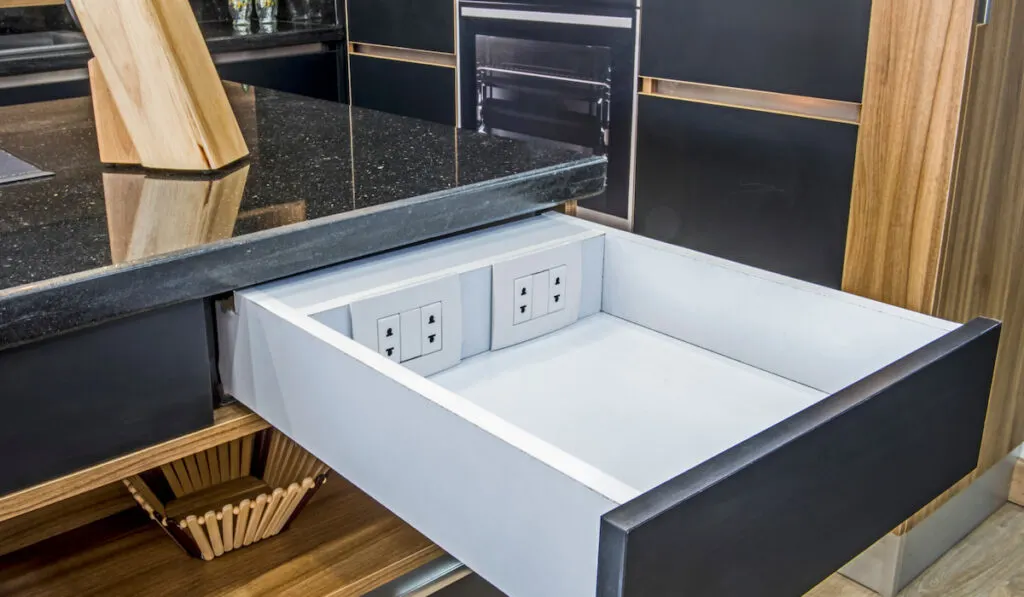
Put Your Outlets in a Drawer
Are you dedicated to keeping your countertops clear and ensuring they’re free from charging phones or iPads? In that case, your best option could be installing power strips and other types of outlets in a kitchen drawer.
Kitchen drawer outlets are a terrific choice because you can hide whatever you’re charging and the outlet itself. To plug something in, you must open the drawer to reveal a charging station or a power strip. Plug in and use whatever you need to and stow it away when you’re finished.
Depending on how committed you are to customization, you can also design the drawer to fit specific devices, like your phone or a tablet. You can build slots for a laptop or keep your music player plugged in inside the drawer.
Pull the drawer open when you need to check a recipe or listen to some tunes while you cook.
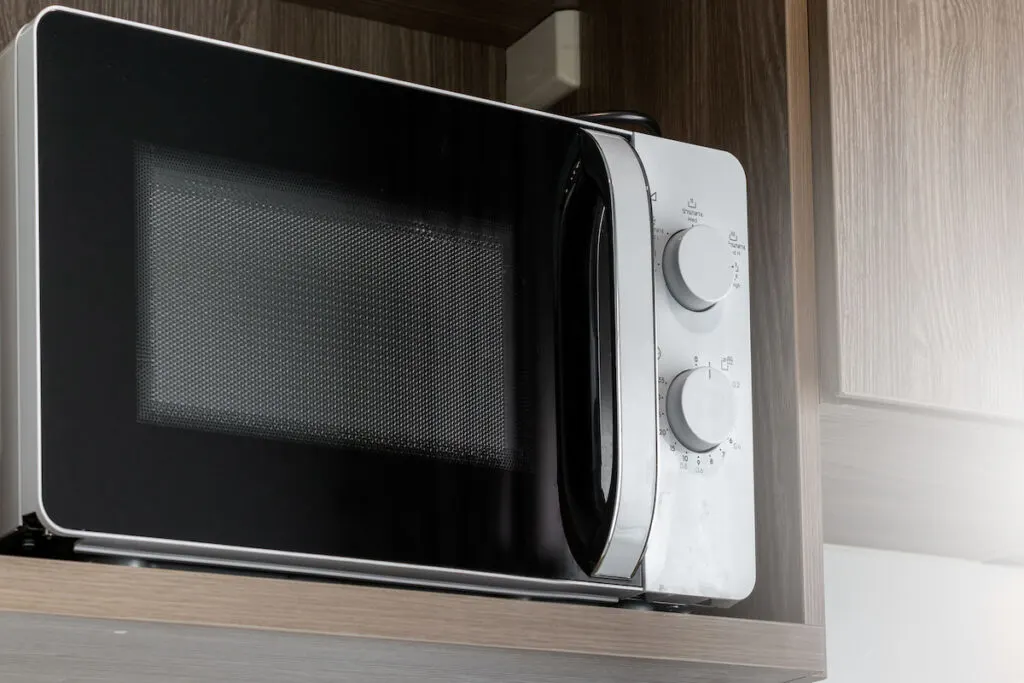
Build Shelves for Devices and Appliances
One way to hide electrical outlets in a kitchen without entirely moving their location is to build a stylish shelf or compartment for what you want to plug in.
For example, if you use an iPad in the kitchen for recipes or as a music player, you can install a stand right in front of the outlet, so the tablet hides the plug, the cord, and everything else.
Likewise, if you have the space, you can install a shelf under an outlet to put your speaker, blender, toaster, or whatever else you need constantly plugged in.
There are instances when you want something plugged in 24/7 but don’t want a wire hanging across your countertop or stretching into a drawer. When that happens, your best bet is a minimalist shelf fit to the devices.
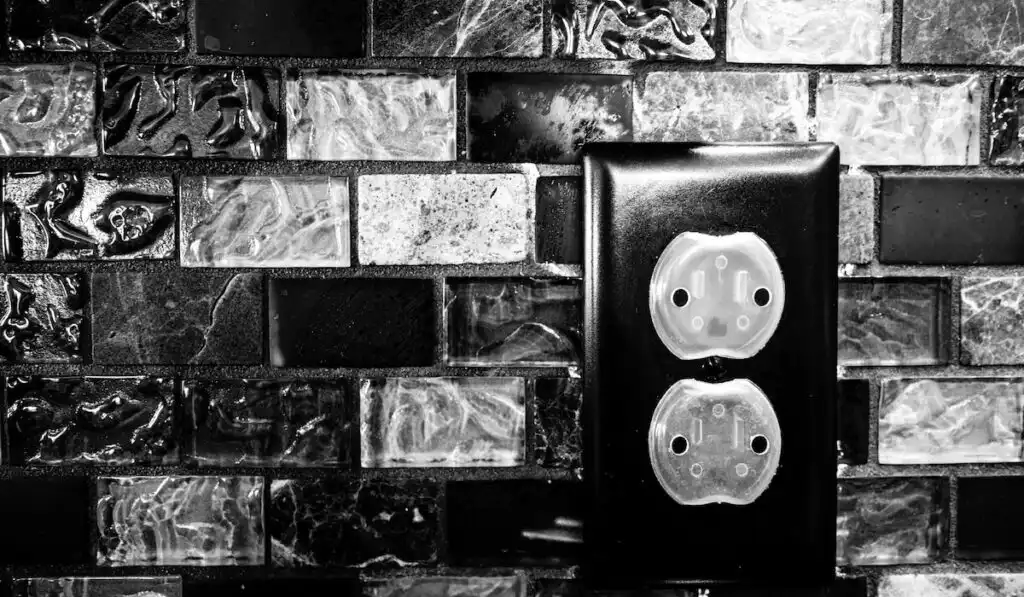
Buy Outlet Caps
Plastic or rubber outlet caps go over the outlet when it’s not used. You can buy them in various sizes to fit almost every type of outlet receptacle. Some outlets come with caps when you buy them. They’re extremely easy to use.
Essentially, you take the cover off when you need to use the outlet and attach it somewhere else on the wall, island, or counter. The caps are either magnetic or have some other form or adhesive that makes them stick nearby when you have something plugged in. This prevents losing them.
They fit over the outlet when you’re not using them. Whenever possible, buy caps that match or closely resemble whatever surface your outlet is located on to hide them better.
These nine tips can help you keep your outlets out of the way and avoid interrupting your kitchen’s design.
If you’re trying to hide outlets in a kitchen built years or decades ago, try some of the simpler solutions first to save money and avoid lengthy renovations. Save drastic moves for when you’re remodeling the rest of the kitchen.
